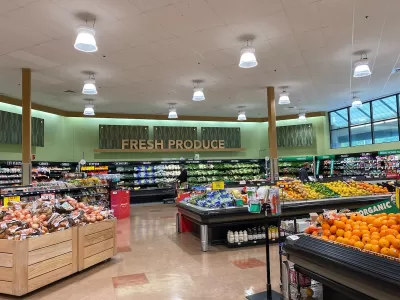Food insecurity in Los Angeles County remains above the national average, disproportionately affecting low-income and minority households, with researchers calling for expanded assistance and systemic solutions to address ongoing disparities.

Despite a 5 percent decline in food insecurity rates from 2023, Los Angeles County continues to face significant challenges, with 25 percent of households — approximately 832,000 — struggling to access sufficient food, according to a USC Dornsife study. The problem is even more acute among low-income residents, where food insecurity affects 41 percent, well above pre-pandemic levels. Nutrition insecurity, marked by limited access to healthy food, impacts 29 percent of households, with Asian communities disproportionately affected. Persistent high living costs and cuts to federal and local food assistance programs have exacerbated these challenges, underscoring the fragile nature of food access in the region.
During the COVID-19 pandemic, expanded food assistance programs like CalFresh and local initiatives helped reduce food insecurity, but the rollback of these supports combined with inflation caused a resurgence in 2023, when food insecurity peaked at 30 percent. Although rates have since declined, they remain far above the national average of 14 percent, disproportionately impacting Latino, Black, and low-income households. For example, Latinos account for 76 percent of food-insecure residents, while 47 percent of affected households include children, highlighting the far-reaching consequences of this crisis.
The study emphasizes that food assistance programs are not reaching enough people, with only 29 percent of food-insecure households enrolled in CalFresh and 9 percent in WIC. Researchers recommend targeted interventions, such as increasing funding for these programs, making healthy and culturally relevant foods more affordable, and strengthening local food systems. USC Dornsife’s research also highlights stark racial disparities in nutrition insecurity, with Asian residents facing the highest rates (35 percent) and Black and Hispanic populations three times more likely to experience food insecurity than white residents, prompting calls for action to address both food and nutrition disparities.
FULL STORY: Food insecurity in LA County remains well above national average, despite slight decline

Planetizen Federal Action Tracker
A weekly monitor of how Trump’s orders and actions are impacting planners and planning in America.

Chicago’s Ghost Rails
Just beneath the surface of the modern city lie the remnants of its expansive early 20th-century streetcar system.

San Antonio and Austin are Fusing Into one Massive Megaregion
The region spanning the two central Texas cities is growing fast, posing challenges for local infrastructure and water supplies.

Since Zion's Shuttles Went Electric “The Smog is Gone”
Visitors to Zion National Park can enjoy the canyon via the nation’s first fully electric park shuttle system.

Trump Distributing DOT Safety Funds at 1/10 Rate of Biden
Funds for Safe Streets and other transportation safety and equity programs are being held up by administrative reviews and conflicts with the Trump administration’s priorities.

German Cities Subsidize Taxis for Women Amid Wave of Violence
Free or low-cost taxi rides can help women navigate cities more safely, but critics say the programs don't address the root causes of violence against women.
Urban Design for Planners 1: Software Tools
This six-course series explores essential urban design concepts using open source software and equips planners with the tools they need to participate fully in the urban design process.
Planning for Universal Design
Learn the tools for implementing Universal Design in planning regulations.
planning NEXT
Appalachian Highlands Housing Partners
Mpact (founded as Rail~Volution)
City of Camden Redevelopment Agency
City of Astoria
City of Portland
City of Laramie





























